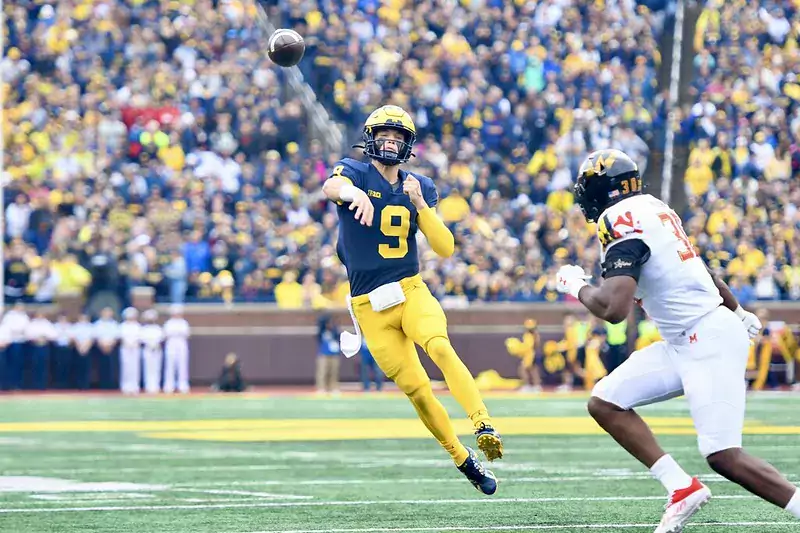water polo

Yesterday I answered a number of your burning questions for our summer mailbag, but there were enough good questions and enough long answers to break this into two pieces. Today we tackle the remaining questions I liked, starting with good old fashioned QB PARANOIA:
Is there any reason to fear (sorry for being paranoid) JJ regresses like prior QBs in year 2 starting under Harbaugh given recent history? (-yoyo)
This question has been in the back of my head for some time, so let's take a look at the evidence about QB "regression" under Harbaugh. Harbaugh has had the following QBs return for a second year at the helm of the offense during his time at Michigan: Speight 2017, Patterson 2019, McNamara 2022 (Cade doesn't count as a returner for 2021 because he obviously didn't play enough in 2020). That's an extremely short list to begin with. You always have to be careful with concluding that something is a pattern based on the evidence when the sample size of evidence isn't large, but let's break it down based on our three player sample size.
Speight in 2017 was definitely a case of regression, if we're comparing him to his pre-injury 2016 self. But I'm not sure how much regression there was compared to the post-injury 2016 Speight, who was also not particularly spectacular. He threw two pick sixes against Florida to start 2017, okay, well let me tell you about some interceptions he threw against Ohio State in 2016 (*ducks*). For me the story of Wilton Speight's career was the injury and how much it changed him. Before the '16 Iowa game, Speight had an average passer rating of 158.0 in the 2016 season. From Iowa through the Orange Bowl, his rating was 97.6. In 2017 up until his second injury against Purdue, Speight had an average rating of 121.9. He wasn't the same player he'd been in early 2016, but 2017 looks like a mere extension of late 2016. Does that qualify as "regression" overall? I'm not so sure.
With Shea, I would say that his 2019 year was worse than 2018, though perhaps not dramatically so. His Y/A and TD/INT ratios were nearly identical, but a lower completion percentage. Shea was a bit worse in '19, but it felt so much worse because we'd been expecting significant improvement. He didn't make a leap, he instead got a little bit worse. Again, perhaps not massive "regression" but definitely not good either. Finally, with Cade in 2022, it's a very small amount of tape to go off of because McNamara was only playing parts of the first couple games before getting injured. He wasn't very good, but it's not like he'd been a worldbeater previously, and again, we're talking about 25 total throws that Cade attempted before injury. Not a whole lot to speak of and I think the best way to phrase this example is "incomplete" due to insufficient evidence.
So what are we left with? One case of mild regression and two players who were not great, with injury mixed in and who didn't make it out of September of that next season healthy. If anything, this review of the examples should make you more terrified about an injury to JJ than regression, because that is anecdotally what tends to happen more often. But as for "regression" itself, I don't know. People can be as paranoid as they want, but I tend to think that the Shea regression was due to questionable work ethic (the infamous golfing remark) than something fundamentally wrong with the coaching. JJ on the other hand seems dedicated and a hard-worker. He's also younger than Shea, 20 during his returning starter season vs. 22 for Patterson, which perhaps means there's more physical upside to tap into that could mitigate any potential regression. I guess the long way of looking at this is it's a possibility but I wouldn't rate it as a super high one and using the past as a guaranteed roadmap for the future is only so useful with only three examples to go off of.
[AFTER THE JUMP: deep threats, hot dogs, bowl games, and non-revenue sports]
84